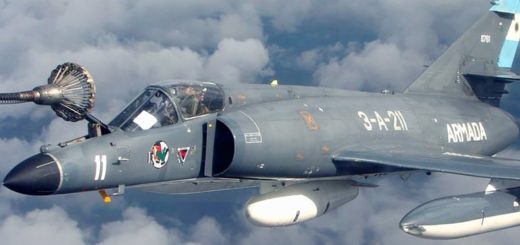Breaking News: U.S. President Trump Unveils Development of Revolutionary F-55 and F-22 Super Stealth Fighter Jets

{loadposition bannertop}
{loadposition sidebarpub}
On May 14, 2025, during a prominent U.S.-Qatar business and defense summit held in Doha, President Donald J. Trump officially announced the development of the United States’ newest fighter jet, the F-55, alongside a comprehensive modernization of the F-22 Raptor, now branded as the F-22 Super. These advanced aircraft projects are set to play a central role in America’s future airpower capabilities and directly contribute to the Pentagon’s long-term Next Generation Air Dominance (NGAD) program.Follow Army Recognition on Google News at this link
U.S. President Donald Trump announces the development of the F-55 next-generation stealth fighter and F-22 Super during a U.S.-Qatar defense summit in Doha, May 14, 2025. (Picture source: Editing Army Recognition Group)
The F-55 fighter jet, described by President Trump as a “super upgrade” to the current F-35 Lightning II, represents a generational leap in tactical air combat design. The twin-engine stealth aircraft will be engineered with superior stealth features, advanced avionics, next-generation data fusion systems, and hypersonic-speed capable propulsion. Designed to operate in the most contested environments, the F-55 will provide U.S. and allied forces with an unparalleled edge in air dominance, electronic warfare, and network-centric operations.
The F-22 Super, meanwhile, will serve as an evolution of the highly regarded F-22 Raptor. While retaining the unmatched maneuverability and stealth capabilities of its predecessor, the upgraded model will incorporate cutting-edge enhancements, including a new radar-absorbent coating, upgraded AESA radar, AI-assisted pilot systems, increased weapons payload, and extended range. The goal is to ensure the Raptor platform remains lethal and relevant well into the 2040s, complementing both the F-55 and future sixth-generation platforms.
Both the F-55 and the F-22 Super are integral components of the broader NGAD strategy, which aims to secure U.S. air superiority through a family of systems approach. This includes not only manned fighters but also a network of support aircraft, unmanned wingmen or Collaborative Combat Aircraft (CCA), and highly integrated command-and-control networks powered by artificial intelligence and cloud-based warfare systems. The NGAD vision reflects the shift from single-platform dominance to a dynamic and adaptable combat ecosystem, capable of countering peer adversaries like China and Russia.
President Trump emphasized the role of American industry in these endeavors. Boeing, Lockheed Martin, and GE Aerospace have already been tapped as key collaborators for the new development projects. Their engineering capabilities and technological resources are seen as essential to delivering next-generation performance while maintaining production scalability and cost-efficiency. The partnership is also expected to boost the U.S. economy by securing thousands of high-skilled manufacturing jobs and strengthening the industrial defense base.
The announcement in Doha, which came alongside major bilateral aerospace trade discussions with Qatari officials, highlights the geostrategic importance of allied cooperation in the Middle East. It underscores a broader message that the U.S. remains committed to maintaining technological and military supremacy not only through its own capabilities but also through alliances and defense exports.
U.S. President Trump’s introduction of the F-55 and F-22 Super programs positions the United States at the forefront of air combat innovation. With global threats becoming more sophisticated and regional tensions escalating, the rapid development and deployment of these platforms could be decisive in preserving U.S. air dominance in the coming decades. These programs represent more than just new aircraft—they symbolize a strategic shift in the philosophy of air warfare and a reaffirmation of America’s role as the world’s leading aerospace power.

{loadposition bannertop}
{loadposition sidebarpub}
On May 14, 2025, during a prominent U.S.-Qatar business and defense summit held in Doha, President Donald J. Trump officially announced the development of the United States’ newest fighter jet, the F-55, alongside a comprehensive modernization of the F-22 Raptor, now branded as the F-22 Super. These advanced aircraft projects are set to play a central role in America’s future airpower capabilities and directly contribute to the Pentagon’s long-term Next Generation Air Dominance (NGAD) program.
Follow Army Recognition on Google News at this link
U.S. President Donald Trump announces the development of the F-55 next-generation stealth fighter and F-22 Super during a U.S.-Qatar defense summit in Doha, May 14, 2025. (Picture source: Editing Army Recognition Group)
The F-55 fighter jet, described by President Trump as a “super upgrade” to the current F-35 Lightning II, represents a generational leap in tactical air combat design. The twin-engine stealth aircraft will be engineered with superior stealth features, advanced avionics, next-generation data fusion systems, and hypersonic-speed capable propulsion. Designed to operate in the most contested environments, the F-55 will provide U.S. and allied forces with an unparalleled edge in air dominance, electronic warfare, and network-centric operations.
The F-22 Super, meanwhile, will serve as an evolution of the highly regarded F-22 Raptor. While retaining the unmatched maneuverability and stealth capabilities of its predecessor, the upgraded model will incorporate cutting-edge enhancements, including a new radar-absorbent coating, upgraded AESA radar, AI-assisted pilot systems, increased weapons payload, and extended range. The goal is to ensure the Raptor platform remains lethal and relevant well into the 2040s, complementing both the F-55 and future sixth-generation platforms.
Both the F-55 and the F-22 Super are integral components of the broader NGAD strategy, which aims to secure U.S. air superiority through a family of systems approach. This includes not only manned fighters but also a network of support aircraft, unmanned wingmen or Collaborative Combat Aircraft (CCA), and highly integrated command-and-control networks powered by artificial intelligence and cloud-based warfare systems. The NGAD vision reflects the shift from single-platform dominance to a dynamic and adaptable combat ecosystem, capable of countering peer adversaries like China and Russia.
President Trump emphasized the role of American industry in these endeavors. Boeing, Lockheed Martin, and GE Aerospace have already been tapped as key collaborators for the new development projects. Their engineering capabilities and technological resources are seen as essential to delivering next-generation performance while maintaining production scalability and cost-efficiency. The partnership is also expected to boost the U.S. economy by securing thousands of high-skilled manufacturing jobs and strengthening the industrial defense base.
The announcement in Doha, which came alongside major bilateral aerospace trade discussions with Qatari officials, highlights the geostrategic importance of allied cooperation in the Middle East. It underscores a broader message that the U.S. remains committed to maintaining technological and military supremacy not only through its own capabilities but also through alliances and defense exports.
U.S. President Trump’s introduction of the F-55 and F-22 Super programs positions the United States at the forefront of air combat innovation. With global threats becoming more sophisticated and regional tensions escalating, the rapid development and deployment of these platforms could be decisive in preserving U.S. air dominance in the coming decades. These programs represent more than just new aircraft—they symbolize a strategic shift in the philosophy of air warfare and a reaffirmation of America’s role as the world’s leading aerospace power.






